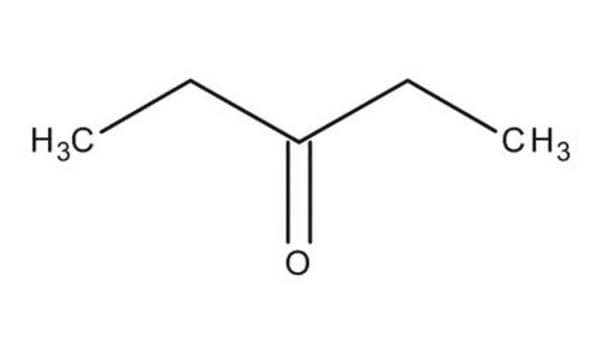235571
1,1,1-Trichloroethane
ReagentPlus®, ≥99%, contains 0.05% low alkyl epoxide as stabilizer
Synonym(s):
Methylchloroform, ‘Chlorothene’
About This Item
Recommended Products
vapor density
4.6 (vs air)
vapor pressure
100 mmHg ( 20 °C)
product line
ReagentPlus®
Assay
≥99%
autoignition temp.
998 °F
contains
0.05% low alkyl epoxide as stabilizer
expl. lim.
7.5-15 %, 25 °F
refractive index
n20/D 1.4366 (lit.)
bp
74-76 °C (lit.)
mp
−35 °C (lit.)
density
1.336 g/mL at 20 °C (lit.)
SMILES string
CC(Cl)(Cl)Cl
InChI
1S/C2H3Cl3/c1-2(3,4)5/h1H3
InChI key
UOCLXMDMGBRAIB-UHFFFAOYSA-N
Looking for similar products? Visit Product Comparison Guide
Application
Legal Information
Signal Word
Warning
Hazard Statements
Precautionary Statements
Hazard Classifications
Acute Tox. 4 Inhalation - Eye Irrit. 2 - Ozone 1 - Skin Irrit. 2
Storage Class Code
6.1C - Combustible acute toxic Cat.3 / toxic compounds or compounds which causing chronic effects
WGK
WGK 3
Flash Point(F)
Not applicable
Flash Point(C)
Not applicable
Personal Protective Equipment
Certificates of Analysis (COA)
Search for Certificates of Analysis (COA) by entering the products Lot/Batch Number. Lot and Batch Numbers can be found on a product’s label following the words ‘Lot’ or ‘Batch’.
Already Own This Product?
Find documentation for the products that you have recently purchased in the Document Library.
Our team of scientists has experience in all areas of research including Life Science, Material Science, Chemical Synthesis, Chromatography, Analytical and many others.
Contact Technical Service









